Angela Ackerman's Blog: Writers Helping Writers, page 70
January 12, 2021
Writing Better Dialogue
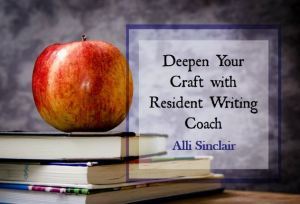
Have you ever read a book or watched a movie where the dialogue has been so beautifully written that you are in that moment, experiencing the character���s emotions and hanging on to their every word? Or you know exactly what the character is feeling or thinking because of their lack of dialogue? Great dialogue can make stories and characters shine and, in novels, it���s a valuable tool to break away from writing too much internal monologue and a wonderful way to show readers the relationships between your characters and reveal important information.
Popular culture is full of memorable movie lines that are quoted the world over. See if you can figure out which movies the following lines are from (extra points if you can name the character!):
A/ Frankly my dear, I don���t give a damn.
B/ Here���s looking at you, kid ���
C/ Show me the money!
How did you do? A was Gone with the Wind, B Casablanca and C Jerry McGuire. It doesn���t matter if you didn���t know them (as we can���t see every movie ever made!) but chances are you���ve heard at least one.
Screenwriters are masters of dialogue. They rarely have the opportunity to include a character���s innermost thoughts on the screen so they rely heavily on dialogue to drive the story forward, develop characters and convey a range of emotions. By studying the art of dialogue through reading screenplays and watching movies or TV shows, it will help you develop your own characters and stories.
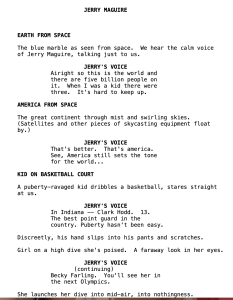
There���s an array of movie and TV scripts available on the internet for you to read and I recommend you start with the screenplay of one of your favorite movies. I will add that screenplays available on the internet are not pirated, as screenwriters and film production companies often make them available for the public to read after a movie or TV show has been produced.��
When studying dialogue, here are some points for you to consider:
What Isn’t SaidHumans rarely say everything we���re thinking and feeling and neither should your characters. If we���re talking about something that scares us or we���re in danger of being found out or simply too embarrassed to talk about a subject, we change topics or do something that helps us avoid talking about something we don���t want.��
The Coen Brothers are brilliant at holding back dialogue that creates tension so that when a character does speak, we���re mesmerized by their words and really want to know what they have to say. The movie No Country for Old Men is a great example.
No Two Characters Should Sound the SameThey way in which a character speaks is a culmination of their experience, upbringing and beliefs and no two people should ever sound the same. Listen to the way your friends and family talk. People have favorite words and expressions, some interrupt conversations while others sit quietly and wait until they���re asked a question or think a long time before saying how they feel. Others avoid talking about their emotions all together. Imagine a conversation between a teenager and someone in their mid-forties. They���re likely to use different idioms and expressions the other may not understand.
Look at each of your characters and figure out what kind of person they are. Are they a leader, follower, questioner, peacemaker or a troublemaker? How would this be reflected in the way they speak? Their traits will greatly influence their conversations with others.
Read the Dialogue Out LoudThe best way to discover if dialogue is working is to read it out loud. You can do it yourself or enlist a friend or family member to be the other character or you can use one of the many available reading programs that will read what���s on the page to you. Does the dialogue sound natural or stilted? Are they using the other character���s name too much in the dialogue (a mistake nearly every writer does!)? Are they too wordy? Remember, most conversations between people are short and simple. Most of us don���t use big words and opt for the simpler version to get our message across. We also don���t speak for great lengths of time without being interrupted and neither should your character.
Don���t Tell Us Something We Already KnowIf an event has happened the reader has been privy to, we don���t need our characters to relate the same event to another character. It could be briefly referenced in a way such as ���Like what happened last Thursday��� and we���ll instantly know what the character is talking about. If you have information to give the reader or another character, do so in an organic way, just like you would inform a friend in real life.
Be a Screenwriter for a DayTry writing an entire scene only with dialogue. Then read through and see how the conversation unfolds. Does it sound realistic? Does it flow like a conversation between real people would? You may find this makes it easier to pinpoint the areas of dialogue that need addressing. Of course, once you���re happy with the dialogue you can add in the inner thoughts and descriptions like you would in the rest of your manuscript.
Get Creative!There���s a classic scene in��Before Sunrise��where the two main characters manage to convey how they feel in dialogue but in a unique way. I won���t elaborate here, as you can watch it unfold in the video below. Are there any ways you can creatively use dialogue in your scenes?��
One of the best screenwriters of our time is Aaron Sorkin. He���s written��The West Wing,��Steve Jobs,��The Social Network��and��A Few Good Men��among other TV shows and movies. He���s a master at dialogue and I highly recommend you read at least one of his screenplays. The website Script Slug gives you access to scripts he has written. You can find it here:��https://www.scriptslug.com/scripts/writer/aaron-sorkin
Learning how to write effective dialogue can be one of the most interesting and fun aspects of the craft. What���s your favorite movie or TV show that has great dialogue?��
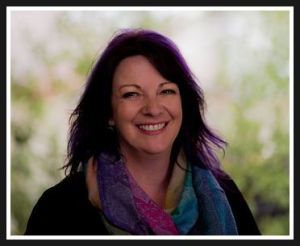 Alli SinclairResident Writing Coach
Alli SinclairResident Writing CoachAlli is an Australian multi-award winning and bestselling author whose fact-based fiction explores little-known historical events. Alli���s books have been voted into the Top 100 Australian novels of all time and when she���s not writing novels, Alli is working on international film and TV projects as a screenwriter and producer.��
��
Alli hosts the��Writers at Sea��cruise retreat for writers, presents writing workshops internationally,��and volunteers as a role model for Books in Homes. Alli is an experienced manuscript assessor and loves to work with writers to help their manuscripts shine.
Website | Newsletter | Facebook | Twitter | Instagram | Goodreads
The post Writing Better Dialogue appeared first on WRITERS HELPING WRITERS��.
January 9, 2021
Relationship Thesaurus Entry: Protagonist and Crush
Successful stories are driven by authentic and interesting characters, so it’s important to craft them carefully. But characters don’t usually exist in a vacuum; throughout the course of your story, they’ll live, work, play, and fight with other cast members. Some of those relationships are positive and supportive, pushing the protagonist to positive growth and helping them achieve their goals. Other relationships do exactly the opposite, derailing your character’s confidence and self-worth or they cause friction and conflict that leads to fallout and disruption. Many relationships hover somewhere in the middle. A balanced story will require a mix of these dynamics.
The purpose of this thesaurus is to encourage you to explore the kinds of relationships that might be good for your story and figure out what each might look like. Think about what a character needs (good and bad), and build a network of connections for him or her that will challenge them, showcase their innermost qualities, and bind readers to their relationship trials and triumphs.
Description: There are many kinds of romantic relationships; this one is all about a protagonist who’s crushing on someone. It may be a far-off person who doesn’t know the character exists (a celebrity or someone at the office) or a person with whom they’re already in a platonic relationship (their boss, a best friend’s sibling, or a friend-of-a-friend). Sometimes the other person is oblivious to the protagonist’s infatuation while, in some cases, it’s obvious despite the character’s best attempts at hiding it.

Dynamics of a Healthy Relationship
Admiring from afar
Trying to catch the crush’s attention in non-intrusive ways (attending a get-together they’re attending, finagling an introduction via a mutual friend, etc.)
The protagonist purposely looking their best when the crush is around
Mooning over the crush to the safe people in the character’s life
Seeing the crush in a positive light; recognizing and valuing their positive traits and attributes
Learning about the crush’s hobbies and taking an interest in them
Seeking to impress the crush (through the character’s performance at work, by highlighting their own strengths, etc.)
Mentally replaying small interactions and analyzing them for interest
Dynamics of an Unhealthy Relationship
Using intrusive means to catch the crush’s attention (by sabotaging their current relationship, crashing a private party, etc.)
Being unable or unwilling to see the crush’s flaws
Being so desperate that the protagonist will accept even negative or harmful attention should the crush offer it
Not taking no for an answer
Stalking
Obsessing to the point of neglecting healthy relationships
All other romantic options paling in comparison to the point that the character is unable to entertain other possibilities
Not being able to properly perform at work or school due to distraction and daydreaming
Being so nervous or flustered around the crush that the character is unable to function
Becoming so obsessed with the crush that the character believes life isn’t worth living without him or her in it
Conflicting Desires that Can Impair the Relationship
When the crush is taboo (a sister’s ex, someone the character’s parents don’t approve of, someone from a different caste, etc.)
Crushing on someone and learning that a friend is interested in the same person
Crushing on two different people
Desiring the crush but feeling unworthy of their love
Recognizing that pursuing an impossible relationship is keeping the character from dealing with past pain, but doing it anyway
The character’s feelings fading when the crush begins showing interest
Longing for the crush but being too afraid to take steps to win them over
Learning something about the crush that impacts the character’s feelings (the emergence of a heinous flaw, learning that the crush has a history of abusing others, etc.)
Crushing on a friend; wanting more but not wanting to ruin the relationship
Crushing on a friend who has feelings for a mutual friend
Clashing Personality Trait Combinations: Bold and Timid, Flirtatious and Jealous, Observant and Reckless, Childish and Mature, Cruel and Innocent, Manipulative and Kind, Needy and Withdrawn, Pretentious and Uncouth
Negative Outcomes of Friction
The protagonist changing their personality or values to avoid conflict with the crush
Sacrificing healthy relationships with those who express concern about the character’s obsession
Being rejected by the crush and becoming depressed or self-destructive
Internal conflict leading to self-doubt, insecurity, and uncertainty
Scenarios That Could Turn These Characters into Allies
A situation revealing personality differences that make the character realize the crush is better as a friend or ally than a romantic partner
Being paired in a contest or competition where the character must put aside personal feelings to work alongside the crush
The crush having feelings for someone close to the character, and the character realizing they make a better pair and helping him/her win the person over
A life-threatening scenario where survival is imperative and there is no room for romantic feelings or entanglements
Ways This Relationship May Lead to Positive Growth
A better match comes along, enabling the character to embrace happiness with someone else
The character realizing that it’s better to be alone than with someone who isn’t a great match
An obsession revealing internal flaws that the character must work through before pursuing a healthy relationship
The protagonist stepping out of their comfort zone and taking a risk to make their feelings known and pursue a worthy relationship
The character choosing to cut their losses and focus their energy and resources on more fruitful endeavors
Themes and Symbols That Can Be Explored through This Relationship
Betrayal, Coming of Age, Enslavement, Freedom, Friendship, Hope, Innocence, Instability, Isolation, Love, Perseverance, Suffering, Vulnerability
Other Relationship Thesaurus entries can be found here .
Need More Descriptive Help?

While this thesaurus is still being developed, the rest of our descriptive collection (15 unique thesauri and growing) is accessible through the One Stop for Writers THESAURUS database.
If you like, swing by and check out the video walkthrough, and then give our Free Trial a spin.
The post Relationship Thesaurus Entry: Protagonist and Crush appeared first on WRITERS HELPING WRITERS��.
January 6, 2021
Why Writers Should Take More Risks This Year
by Colleen M. Story

It���s the start of a new year. Are you ready to take the next step in your writing career?
If not, that���s okay. Do it anyway.
Because no writer ever got anywhere waiting until she was ���ready.���
5 Advantages Risk Takers Have Over Writers Who Play It Safe
Look around and you’ll see���successful writers are risk-takers.
That means they do things before they feel completely ���ready��� to do them.
Writers are often by nature a cautious bunch. We like to make sure everything is right before we take that leap. That���s usually a good approach when it comes to the writing itself, but it can stunt your growth in the rest of your writing career.
1. Risk Takers Are Smarter
In 2015, researchers reported on a study in which they used MRI scans to compare the brains of risk-takers with play-it-safers. They found the risk-takers had more white matter in their brains���the area responsible for sending messages back and forth.
Why would this be? It seems the more risks a person takes, the more he/she learns about various situations, which helps the brain grow. Ergo, risk takers are smarter!

2. Risk Takers are Optimists
Risk takers are optimists by nature. They���re more willing to take a risk because they have a positive outlook. ���It will be great!��� they say, whereas the play-it-safers are more likely to list all the ways things will go wrong. (One of the reasons they hesitate.)
Risk takers have the right attitude when it comes to taking chances. They know things may not always work out perfectly, but they feel confident they���ll be able to handle whatever challenges may come their way.
3. Risk Takers Learn More
It���s one thing to ���think about��� trying something new. Take self-publishing a book, for example. You can imagine all the steps you need to take, but the process of actually taking them will teach you far more.
4. Risk Takers Overcome Fear of Failure
Play-it-safers fear failure. It���s the main reason why they avoid taking risks. After all, if you never submit to a publisher, you never have to suffer through a rejection.
The writer who takes the risk of submitting again and again eventually overcomes that fear of failure. It doesn���t mean rejections don���t sting. It just means the writer has developed the skill to manage it.
5. Risk Takers are Happier
In one study involving more than 20,000 interviews, researchers found that people who enjoyed taking risks were more content with their lives as they got older.
Here���s another interesting finding: Those more likely to take risks were also more likely to be self-employed. (Hello authorpreneurs!)

How to Take Smart Risk in Your Writing Career
This year, why not take a few more risks in your writing life? You may fail a time or two, but you���ll build your confidence and learn a lot on the way
Just remember two things:
1. It will never feel comfortable. There will always be an element of the unknown in any risk you take���that���s what makes it exciting! So expect a few butterflies and proceed anyway.
2. Take smart risks. I���m not saying quit your day job tomorrow and go off to Hawaii to write. It���s important to stack the odds in your favor before you take that leap.
How do you do that?
Answer three questions. Here���s an example for you.
Let���s say you���re thinking of self-publishing a book this year for the first time. (You can use any example you like from your writing life.)
First, write down all the potential problems that could occur.
For example:
The cover may not work for your target audience.The book may contain errors.You may have poor sales.You may get bad reviews.
Next, put on your problem-solving hat. How can you reduce the odds that these negative outcomes will occur?

Research covers that sell in your genre and hire a professional cover designer.Hire a proficient editor and proofreader.Put together a plan for a successful book launch.Make your book as good as you can, then offer it to your followers to review.
The problem-solving step is critical when it comes to taking risks. It not only improves the odds your risk will pay off, but it also pushes you to innovate in ways you may not have otherwise.
Consider the writer who has a small subscriber list and is worried about having a lackluster book launch. Problem-solving compels her to grow that list before her book comes out.
By doing so, she solves her launch problem and expands her author business.
Finally, ask yourself the question most writers miss: What will it cost you NOT to take this risk?
My work remains in the desk drawer and never sees the light of day.I continue to stagnate as a writer, rather than progressing.My author business struggles.I become a discouraged writer.
Play-it-safers benefit most from this step because it shows the very real cost of NOT taking a risk. Oftentimes, when looking at your writing career as a whole, this is a much more damaging option than taking a risk might be.
Ready to Take That Leap?

Once you���ve answered all of the questions above, it���s time to take that leap. Hold your breath and jump, and have faith that it will work out.
If you���re still not sure, I offer you this quote by actor Hugh Laurie (���House���) as inspiration:
���It’s a terrible thing, I think, in life to wait until you’re ready. I have this feeling now that actually no one is ever ready to do anything. There’s almost no such thing as ready. There’s only now. And you may as well do it now. I mean, I say that confidently as if I’m about to go bungee jumping or something ��� I’m not. I’m not a crazed risk taker. But I do think that, generally speaking, now is as good a time as any.���

Get help setting inspiring goals this year with Colleen���s FREE ���Start the Year Off Right��� bundle, available here!
Sources
Harvard Health Publishing. (2020, July 27). Optimism and your health. Harvard Health. A quote by Hugh Laurie. (n.d.). Goodreads | Meet your next favorite book. Science Daily. (2020, November 18). No risk, no fun? People who take risks more satisfied with their lives. ScienceDaily. Vorobyev,��V., Kwon,��M.��S., Moe,��D., Parkkola,��R., & H��m��l��inen,��H. (2015). Risk-taking behavior in a computerized driving task: Brain activation correlates of decision-making, outcome, and peer influence in male adolescents. PLOS ONE, 10(6), e0129516.
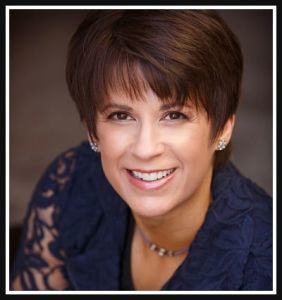 Colleen M. StoryResident Writing Coach
Colleen M. StoryResident Writing Coach
Colleen inspires writers to overcome modern-day challenges and find creative fulfillment in their work. Her latest release, Writer Get Noticed!, was a gold-medal winner in the Reader���s Favorite Book Awards. Overwhelmed Writer Rescue was named Book by Book Publicity���s Best Writing/Publishing Book in 2018. Colleen frequently serves as a workshop leader and motivational speaker.
Writing and Wellness | Author Site | Twitter
The post Why Writers Should Take More Risks This Year appeared first on WRITERS HELPING WRITERS��.
January 5, 2021
Introducing Unique Story Elements without Confusing Readers
Story openings can be difficult as authors struggle to introduce the protagonist, show them in their everyday world, hint at what���s missing, and begin the vital process of building empathy. And all of this has to be done in a way that doesn���t drag the pace or overload readers with exposition and backstory narratives.
It becomes even more complicated for stories containing unique or otherworldly elements that readers won���t readily understand. Trying to explain a tribble, flux capacitor, or the imprinting process of dragons can easily devolve into long explanatory passages that leave readers yawning and wondering what���s in the fridge. Not the impression you want to make with your opening scene.

But it is possible to get that important information across in a way that will keep readers engaged.
Stagger the New Stuff
In general, people need time to assimilate new information and work it into their existing knowledge. If you try to introduce a bunch of new inventions, characters, elements of magic, or political factions at once, readers��� brains are going to explode. Give them one new thing to work on at a time before introducing something else.
This requires you to ask an important question at the start of your opening scene: What information does my character need right now?
There���s a common disconnect here between what the author thinks the reader needs to know and what the reader actually needs to know. We ALWAYS think they need more information, which usually results in us throwing it all into the opening chapter. And readers end up overwhelmed or lost.
Instead, figure out what they need to know now, at this point in the story���i.e., identify which one of those unique elements are most important to that scene. Introduce it, then give the reader time to process the information before you throw another new idea into the mix.
Garth Nix does this exceptionally well. Here���s the first paragraph from Sabriel, the first book of his Old Kingdom series:
It was little more than three miles from the Wall into the Old Kingdom, but that was enough. Noonday sunshine could be seen on the other side of the Wall in Ancelstierre, and not a cloud in sight. Here, there was a cloudy sunset, and a steady rain had just begun to fall, coming faster than the tents could be raised.
With this introduction we see that something unusual is going on with the setting. There are two kingdoms bordering each other, but the usual Earthly rules don���t apply. The weather is different on either side of the boundary wall. Time also flows strangely because while it���s noon in Ancelstierre, dusk is falling in the Old Kingdom.
There are many more���and more significant���unique elements in the story, but this is all the author needed to share at this point. The rest is revealed later, being doled out on an as-needed basis.
Show It in Context
When the time is right to present a unique element, do yourself a favor and show it to readers instead of telling them about it first.

We have this idea that if we explain a new concept before it makes an appearance, the reader will have the information they need to understand it when they finally see it. But this isn���t how the brain works. We grasp new concepts and ideas much better when we can see them in context. So when you have a new element or concept to share, resist the urge to explain it. Simply show it being used, discussed, manipulated, etc. as part of the actual story. This provides the context necessary for readers to fill the gaps in their knowledge, and it does so without killing the pace in your important opening pages.
As an example, the book City of a Thousand Dolls involves something unique called an asar. Here���s how the author introduces it:
Her satisfaction lasted only as long as it took for a group of girls to decide she was an easy target in her plain gray asar and untidy braid .
And a few paragraphs later:
She could imagine the House Mistress perfectly, her rust-brown asar wrapped so it came only to her knees, the short sword at her side .
Based on this description, the reader understands that an��asar��is a garment of clothing in this world, and it���s associated in some way with value or worth. Is that due to wealth? Talent? Prestige? We don���t know, and at this point, we don���t need to know. The author has provided enough information for us to be able to move forward without confusion.��
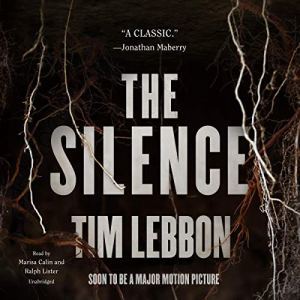
For another inspired example, check out Tim Lebbon���s��The Silence. The story begins with geologists opening a subterranean cave that has been sealed off for millennia, releasing a never-before-encountered creature that quickly sets civilization back to the dark ages. We learn about this terror a little bit at a time via news reports and social media accounts. First we watch a flying animal, tiny with distance, bringing down a human. Then we see a live but distorted image of leathery wings and lots of teeth. As more reports come in, the characters start calling them vesps���short for��viespi. Wasps. Someone refers to them as a swarm of flying rats�����
Little by little, we gain an understanding of this monster. The author gives readers time to fit the new information into their existing knowledge and create a framework for the vesps. And by being stingy with the details, Lebbon allows intrigue to build as we slowly begin to realize that the characters are in serious trouble.
Find the Right Balance
How much space should you leave between new elements? This will vary from story to story.
Lebbons takes his time introducing the vesps, using the first five chapters to show what they look like, their hunting habits, and their alarmingly quick life cycle. A longer timeline works for this story because there���s only one new creature to introduce. But in a book like Sabriel, which involves not only a fantasy world but a unique system of magic and a twist on necromancers, the author can���t afford to wait quite so long between elements.
Some of this process undoubtedly involves trial and error, with��reader clarity��casting the deciding vote. Ask yourself:��Are readers confused, or can they follow what���s happening?��This is where critique partners and beta readers are invaluable. If they can read your first few pages without getting lost, you���re good to go. But if they voice confusion or ask questions for clarification (I���m not sure what���s going on. What���s this thing supposed to do? Is that guy with the government or the rebellion?), you���ll want to regroup. Maybe you need a little more space between new elements. It���s very likely that some of those new ideas can be shared later in the story, allowing you to simplify the opening.
Listen,��first pages��are hard. Because we know every possible thing about our characters and their world, it���s hard to know how much to share and when to share it. When it comes to those weird and awesome elements that are unique to your story, spread them out and show each one in context. Readers will be fascinated rather than confused, eager to see what else your intriguing world has to offer.
The post Introducing Unique Story Elements without Confusing Readers appeared first on WRITERS HELPING WRITERS��.
January 4, 2021
Angela’s Tips for a Happier Writing Life

Well folks, we made it: 2021. And while nothing’s really changed, I think we all feel a weight has lifted. The vaccine rollout has started and while it will take time to get to most of us, our collective gaze is focused on the future. Hope is back. We know this upside-down hellscape will end.
Clearly, we’d all prefer to pretend the calendar went from 2019 to 2021 but we can’t. And guess what? We shouldn’t. This past year was full of lessons – we were challenged beyond belief. We had to juggle and handle more than we ever thought we could. And we did it, proving we’re stronger and more resilient than we believed ourselves to be.
It’s taken a toll, though. This last year we had to be all the things to everyone just to keep our battered lifeboat afloat. Unfortunately the struggle isn’t over, so we need to find a new way to manage everything to avoid a crash-and-burn. Let’s unpack what can be done.
1. Slow Your Roll
Typically January is a time for beating our chests, shouting writerly war cries, and leaping into the new year. Admirable, but we haven’t yet figured out if 2021 is an older dog snoozing on the porch or a rabid, blood demon ready to bite. So, rather than stacking your next twelve months minute-by-minute, step back and self-assess: how is my family doing, and what do they need? How am I doing and what do I need? Once these are answered move on to, how can I take care of these and make strides forward in my writing?

Balance should be on our radar right now, and not stretching ourselves too thin. What will fuel you and make you happy this coming year? Set intentions for yourself that help your writing career and nourish your spirit. Maybe you want to read more fiction, play around with a new genre, or take a class on screenwriting because you’ve always wondered what that side of the fence is like. Or you know creating new habits will make you feel better overall: walking every day, taking breaks from the desk, eating better or getting more rest.
I get your first instinct might be to hit the writing/publishing/marketing/go-go-go mat with everything you’ve got, but is it sustainable after such a rough year? Do what you can but make room for things that bring you joy.
2. Don’t Freak Out
Every year I read predictions from industry experts to better see what the marketing landscape looks and I’m sure you do, too. Some are saying that last year, lots of people picked up a pen and so they’ll be publishing those books this year (whether they should is another discussion). The consensus is that authors should expect more competition and so will want to focus on platform to help themselves stand out.
This may be excellent advice for a normal year when your tank is full and your engine is revving at January’s starting gate. But a year when you’re carrying a heavy load already and trying to ration your last energy bar? I don’t know. Is pushing yourself to spend even more time on social media, investigating, joining, and navigating new platforms, figuring out visibility algorithms, investing ads to bring people to you, etc…is this the best use of your time?

I can’t answer this, only you can. But it’s wise to remember two things: 1) you only have so much time and energy in the bucket and 2) sometimes less is more. Investing time in one or two social spaces to connect with potential readers will pay off more that stretching yourself thin trying to do it all. Identify what is best to focus on and don’t feel pressured to do more than you think you need to. For you, maybe the biggest platform move you can make is growing your newsletter list, not getting yourself on TikTok, starting a podcast, or mastering Facebook.
Will there be more books published in 2021? Yes. Some will be terrible, some will be good, as always. Remember, only a fraction of a fraction of the good books are your “competition” (Why air quotes? Because other authors aren’t competitors, they are assets. Another post for another day). Every book has its own set of readers so you only need to worry about reaching the ones right for YOUR book. So whatever you do regarding platform, make sure you’re specifically funneling time into gaining a foothold with your exact audience not worrying about all those other authors and their books.
3. Remember Your Why

I am speaking from experience on this one when I say that when you’re overwhelmed, it is easy to become utterly disillusioned. You question your path, why it’s taking so long to achieve the success you hoped, and maybe start thinking your path lies elsewhere. This often leads to setting aggressive goals in a “this year I kill it or I give up” deadline, or you plod along, unhappy and even more unproductive, which in turn causes more stress and feelings of inadequacy. Both are unfair to you, the work you have put into your writing, and will leave you feeling even MORE worn out.
So, cut yourself some slack. This career doesn’t happen overnight, and that’s okay–anything worth doing is worth doing well. Pick up a book, watch a movie…get lost in the beauty of story. Remember WHY words called to you in the first place. Remember how books made you feel BEFORE you started to write, how they were your companion, your solace, your guide. And then think about how your stories will give that gift to others one day. There’s no race going on here, so remember your “why” and let yourself fall in love with the journey again, not just the result.
4. Stay Connected
We writers are often lone wolves when it comes to putting pen to paper, but we still need people. Our peers can help us problem solve, grow, and stay sane. Having an online writing community is a great way to stay connected when other avenues for connection have closed. I’m partial to The Critique Circle as it’s where Becca and I met, but here’s a list of communities to look into.
5. Set Micro Goals, Not Macro Goals
I know many of us want to set big goals because we feel like the last year totally sidelined us, but in times of uncertainty, things are not always in our control. So this might be a year to plot our course forward through a series of achievable, micro goals. Like stepping stones across a creek, they will still get us to our destination, and we can celebrate each one as we accomplish it rather than pine for the “big” goal. Succeeding on a smaller scale renews energy levels and, should something happen to derail us, allows us to pivot and regroup more easily. Win-win.

All of these are about the same thing…protecting your mindset so you don’t overextend yourself.
Burnout isn’t pretty and many of us are flirting with it (or we’ve hit the wall already). 2020 was about survival, and managing a crisis. 2021 will be a year of transition where we continue navigating challenges but are looking to also begin reclaiming our lives. So as you chart your course, think about your own well-being as much as the goals you want to achieve. There’s a light at the end of the tunnel, so let’s pace ourselves and celebrate each win as it comes!
The post Angela’s Tips for a Happier Writing Life appeared first on WRITERS HELPING WRITERS��.
January 2, 2021
Relationship Thesaurus Entry: Host and Guest
Successful stories are driven by authentic and interesting characters, so it’s important to craft them carefully. But characters don’t usually exist in a vacuum; throughout the course of your story, they’ll live, work, play, and fight with other cast members. Some of those relationships are positive and supportive, pushing the protagonist to positive growth and helping them achieve their goals. Other relationships do exactly the opposite, derailing your character’s confidence and self-worth or they cause friction and conflict that leads to fallout and disruption. Many relationships hover somewhere in the middle. A balanced story will require a mix of these dynamics.
The purpose of this thesaurus is to encourage you to explore the kinds of relationships that might be good for your story and figure out what each might look like. Think about what a character needs (good and bad), and build a network of connections for him or her that will challenge them, showcase their innermost qualities, and bind readers to their relationship trials and triumphs.

Description: A host or hostess is someone who welcomes and entertains guests at a venue, function, or in their own home. They are responsible for taking care of the needs of their guests, making them feel both valued and special.
Dynamics of a Healthy Relationship
Respect and appreciation that flows both ways
Ensuring the other party has any information they need (where to find things, a timetable of activities, and any special requirements, allergies, constraints, or expectations the other may need to know)
Being polite, friendly, and patient
Doing as instructed
Being on time and not making unreasonable demands of the other
Being appreciative of the other’s time and attention
Playing peacekeeper and discouraging drama should it crop up
Dynamics of an Unhealthy Relationship
Monopolizing someone’s time because they believe they have the right to
Not respecting the host’s property, time, or reputation
Tempers that flare
Being two-faced (threats hidden behind smiles, veiled insults, gossiping about the other to bring down their reputation)
Seeking to undermine or exploit the other
Using one’s role to make the other look bad (creating problems for a host that are impossible to fix, or calling negative attention to a guest, thereby singling them out among their peers)
Making unreasonable demands (forcing too many rules on a guest or demanding a host go above and beyond)
Taking advantage of someone’s hospitality
Noticeable friction between a host and guest that makes others uncomfortable
Endangering guests (conducting illegal activities while at the host’s home, distributing drugs at a party, etc.)
Conflicting Desires that Can Impair the Relationship
The host wants a flawless evening but a guest is bent on causing trouble
Providing an open bar so guests can enjoy themselves and having someone get sloppy drunk
A guest showing up unannounced at a bad time
Inviting a specific guest because they will draw a crowd but they end up treating others poorly due to an inflated sense of importance
Asking for something that is inappropriate in one’s role (a date, a loan, a favor, to obtain something illegal, etc.)
House guests who do not want to leave
Clashing Personality Trait Combinations: Generosity and greed, kindness and ungrateful, observant and secretive, vain and simple, nosy and private, extroverted and introverted, proper and rebellious, reckless and responsible
Negative Outcomes of Friction
A host losing their temper and creating a scene
Property damage
Ruining someone’s reputation through careless words
An outburst where true feelings come through (revealing a bias, envy, tipping one’s hand to plans for revenge, etc.)
Saying something that can’t be taken back, thereby damaging a relationship
Being goaded into doing something stupid
Losing one’s leverage (saying something that will reach the wrong ears)
Incurring expenses as a host beyond what they can afford
Pushing one’s agenda when it isn’t appropriate and making enemies
Losing face in front of others when the evening goes sour
Fictional Scenarios That Could Turn These Characters into Allies
When a guest’s presence puts everyone in danger, the host will be incentivized to help them leave, hide, or escape
If a threat emerges (a home invasion, for example), the host and guest will work together to survive the threat
When a party-goer over drinks, the host and another guest might help him or her get home, or move them to a room to sleep it off
If something happens to derail the evening and the host needs help, a guest might step up to help
If both need information from another guest they might work together to get it
If disaster strikes (an earthquake, a house fire, enemies at the gate, etc.) everyone will pull together to survive it
If a crime is committed and both end up falsely accused, that will put them on the same side
A situation where it’s important that everyone’s stories match when questioned by the police
When covering for someone equates to covering yourself (due to a mistake made, being in the wrong place at the wrong time, etc.)
Ways This Relationship May Lead to Positive Change
Characters who struggle socially may find that playing a role (host or guest) takes some of the pressure off because they have guidelines on what is expected of them
When there’s friction between characters, they must put it aside as the relationship of host and guest requires decorum. Civility may create a gap where old hurts can be addressed and worked through
Characters who previously overlooked the other’s value may gain new appreciation for one another. A host might note little things about their guest’s behavior, habits, and intelligence while a guest may come to appreciate the organization, attention, and caring of their host
A host and a guest will have different observations of the same event and by putting them together, gain a clearer picture of what actually happened
Themes and Symbols That Can Be Explored through This Relationship
A Fall from Grace, Alienation, A Quest for Knowledge, Betrayal, Danger, Death, Deception, Family, Friendship, Love, Mystery, Obstacles, Order, Peace, Recognition, Refuge, Teamwork, Vanity, Wealth
Other Relationship Thesaurus entries can be found here.
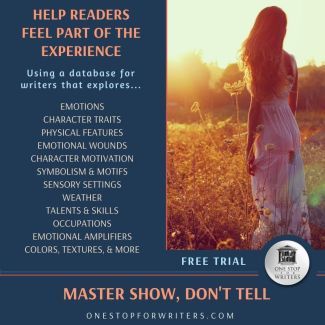
Need More Descriptive Help?
While this thesaurus is still being developed, the rest of our descriptive collection (15 unique thesauri and growing) is accessible through the One Stop for Writers THESAURUS database.
If you like, swing by and check out the video walkthrough, and then give our Free Trial a spin.
The post Relationship Thesaurus Entry: Host and Guest appeared first on WRITERS HELPING WRITERS��.
December 28, 2020
The Emotion Thesaurus EXPANDED Edition is .99 Cents (Limited Time Amazon Deal)

No, your eyes are not deceiving you…from December 28th to the 31st, Amazon.com has chosen the Emotion Thesaurus Expanded 2nd edition as their BIG DEAL and you can grab the kindle version for less than a buck. (Affiliate links)
It’s insane. It’s also a deal you may never see again.
So if you, a writing friend, critique group, writing organization, or workshop coordinator needs help with showing emotion, please take advantage of this great price!
Some of you may have the original and wonder if you need the 2nd edition. Here’s what’s new:
Each entry is bigger, containing more ideas on how to show emotions to readers, a list of how emotions escalate and deescalate, and a selection of power verbs for every emotion
55 NEW Emotions have been added. Browse the Table of Contents or view these open entries: Euphoria, Vindicated, and Schadenfreude
The teaching content has doubled. The book delves deeper into emotion with new section on how to show hidden emotions, the power of subtext, and more.
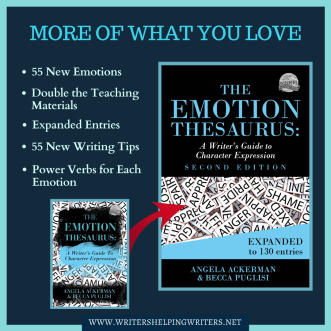
Overall, this book is almost double in size. We’ve reduced the font to industry standard, meaning there’s more room on each page, so we’ve been able to expand on each entry. Talk about a win-win!
To really get an idea of what’s new and to see the entries for yourself, view Amazon’s generous “Look Inside” feature or read some of the 1100+ reviews, like these:
“Excellent reference- from beginning to end!”
~ Peggy, HALL OF FAME TOP 50 REVIEWER
“Still the Best Writing Resource and the Second Edition Is Worth It”
~ Jami Gold
“Even better than the original and that’s saying a lot. A must for all writers”
~ Sis Steele
Showing fresh emotion on the page is something many writers struggle with. This guide can help. We hope you or someone you know is able to take advantage of these savings. Amazon’s BIG DEAL ends December 31st, 2020.
The post The Emotion Thesaurus EXPANDED Edition is .99 Cents (Limited Time Amazon Deal) appeared first on WRITERS HELPING WRITERS��.
December 19, 2020
Happy Holidays from Angela & Becca + Our Favorite Recipes!

It’s that time of year where Becca and Angela brew up some hot chocolate, set out a plate of cookies, and tuck Writers Helping Writers in for a well-earned fireside rest until 2021.
Once again, our heartfelt appreciation for your visits, kind words of support, and trust in us. We love serving the writing community through this blog, One Stop for Writers, our books, and teaching. This year’s been a tough one, but better days are coming for all of us. Let’s all find things to smile about this holiday season!
We thought it might be fun to end the year with a favorite recipe from each of us, something we always make during the holidays. And who knows, maybe you’d like to make it, too. 
Becca’s Hot Spinach Dip
1 10-ounce package frozen chopped spinach (thawed, drained, and squeezed dry)1 package cream cheese, softened2 cups grated cheddar jack cheese1 small grated onion1 large chopped tomato1/3 cup whipping creamCayenne pepper���enough to give it some kick
Mix well and place in a large buttered pie plate. Cook at 350 for 30 minutes. Can also be prepped ahead and baked the morning of. Just remove from the fridge a few hours ahead of time and cook for ten extra minutes. Serve with a sourdough french round (cut into pieces) or your favorite dipping bread.
Becca says: I don’t even like spinach, but this stuff���mmmmm. If I’m not hosting, I make it for us, so I can eat it over the holidays  .
.
Angela’s Pumpkin Pancakes
1����� cups milk1 1/2 cup pumpkin puree1 egg2 tablespoons melted butter2 tablespoons vinegar2 cups all-purpose flour4 tablespoons brown sugar2 teaspoons baking powder1 teaspoon baking soda1 teaspoon ground allspice (to taste)1-2 teaspoon ground cinnamon (to taste)1 teaspoon ground ginger (to taste – I often use more, but start here)�� teaspoon salt
Mix the wet ingredients (including the pumpkin), and then add the dry. (If you want to mix the dry all together first, fill your boots!) Mix everything until combined and then slap a dollop down on a greased griddle or frying pan. Add butter, syrup, and enjoy!
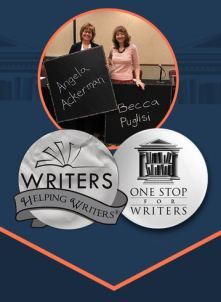
Angela says: This is a staple, both for breakfast and dinner. Even people who don’t love pumpkin love these. Mr. Angela asks for these often, especially over the holidays.
Wishing you all health, peace (and maybe some boozy eggnog). See you in 2021!
~ Becca & Angela
The post Happy Holidays from Angela & Becca + Our Favorite Recipes! appeared first on WRITERS HELPING WRITERS��.
December 18, 2020
Last Chance to Win $2300 in Writing Resources
It’s that bittersweet moment: Last Call. Nope, not for a pint, but a final chance to enter our Advent Calendar for Writers Giveaway, featuring all these AMAZING prizes:
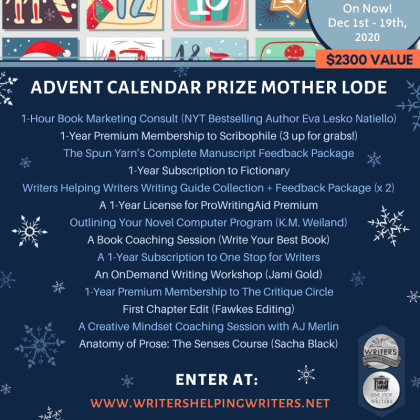
Wouldn’t it be great to start 2021 with one of these prizes in your corner? How great would it be to win free coaching, editing, a subscription or membership, or even that incredible FULL MANUSCRIPT EVALUATION PACKAGE?
Well, you know what they say…you can’t win something if you don’t enter. So swing by each giveaway below by 11:59 EST and who knows, maybe you’ll end up with something awesome!
Giveaway List:
Dec 1: A Marketing Consult with NYT Best-Selling Author Eva Lesko Natieillo
Dec 2: A 1-Year Subscription to Fictionary Storyteller
Dec 3:A First Chapter Edit by Fawkes Editing
Dec 4: A Complete Manuscript Feedback Package by The Spun Yarn
Dec 5: An OnDemand Writing Workshop with Jami Gold
Dec 6: A 1-Year License for ProWritingAid Premium
Dec 7: A 1-Year Subscription to One Stop for Writers
Dec 8: A Seat in Anatomy of Prose: The Senses Course
Dec 9: A 1-Hour Coaching Session with Christina Kaye
Dec 10: A One-on-One Mindset Wellness Coaching Session with A.J. Merlin
Dec 11: One Year Premium Membership to Scribophile
Dec 12: An 8-book Thesaurus Collection + Story Feedback from Becca & Angela
Dec 13: Outlining Your Novel Workbook Program (K.M.Weiland)
Dec 14: A Premium Membership to The Critique Circle
Good luck and thank you so much for joining us to celebrate writers and the writing community.
The post Last Chance to Win $2300 in Writing Resources appeared first on WRITERS HELPING WRITERS��.
December 16, 2020
Your Character’s Job May Be More Important than You Think!
Confession time: when I was a newer writer, I didn���t think much about my character’s occupation. In fact, if they needed one, I���d pretty much assign the first job that came to mind. I didn’t think hard about it because I didn’t think their job mattered.
And I was wrong.
Far from being an afterthought, a job or career is an opportunity to show readers who your character really is.

If you think about it, in the real world, work is a big focus for all of us. Consider your own job. How many hours a day do you spend working? Do you bring it home with you, obsess about it, spend hours thinking about it? Does the stress of the day impact your mood, interfere with your ability to enjoy activities, and cause problems in your relationships?
Characters are mirrors of us, so work will be a big part of their reality. Logically they would do as we would: choose a job they’re interested in, are good at, and it pays the bills, meaning when we choose a job with care, it will become a goldmine of characterization and plot opportunities.
Remember, show-don’t-tell is king.
Here are some things a job can reveal about your character:
THEIR PRIORITIES:��
Jobs almost always shed light on what your character cares about and will sacrifice for. If they work two jobs, forgoing sleep, time off, hobbies, and socialization, there���s a reason for it. Maybe they are supporting their family as a single parent, are trying to put themselves through school, have younger siblings to support because their parents are deadbeats, or something else. So, ask yourself: is my character all about money? Do they crave power and influence? Whatever it is, make sure their job choice reflects this.����
THEIR PERSONALITY TRAITS:
Certain traits make it easier for someone to succeed at their job, so when a reader sees a character working in a specific field, they���re going to naturally draw conclusions about their personality. A character who is a server in a restaurant likely relies on tips to supplement their income, so a reader would expect they would be friendly, respectful, and hard-working. Likewise, if you introduce your character as a pickpocket, right away a reader will start imagining someone who is observant, calculating, opportunistic.��������������
THEIR ABILITIES:
Obviously natural abilities and skills can make someone good at what they do. A surgeon will have steady hands. A psychologist will be a reader of body language. A police officer will notice details and be able to recall them immediately, on duty or off. Skills not only make someone unique; they can also help a character achieve their goal. For example, if your special needs teacher is taken hostage, maybe her experience with deescalating volatile situations and ability to persuade might help her convince her captor to let her go.��
THEIR MOTIVATION:��
Characters, like people, are driven by unmet needs. An occupation can represent a steppingstone to what they want (a personal trainer who is working to become a professional weight lifter), or even be a sign of an emotional wound (a bounty hunter who brings criminals to justice because his parents were killed and the murderer was never caught).��
THEIR HOBBIES AND PASSIONS:
Careers may grow from a favorite activity. Does your character love stand-up comedy and so makes a career of it? Do they have a passion for dollhouses and so they build a business that sells dollhouse-making supplies?��
THEIR PHYSICAL DETAILS:
A construction worker is going to be rugged and strong. A mechanic will have stained, calloused hands. Whether it���s the uniform or expectations that go with the job, an occupation can provide many unspoken clues about how a character looks and behaves at work.��
THEIR LIKES AND DISLIKES:
What does your character���s job say about their preferences? A professional athlete will enjoy exercise, being part of a team, and setting stretch goals���.and they probably wouldn���t like to be around people who are lazy, unmotivated, and whine about how tough life is.��
THEIR ETHICS, VALUES, AND BELIEFS:��
Did your character choose a job that aligns with his deepest beliefs? A military career communicates patriotism and respect for one���s country. A doctor or judge will have strong ethics. Careers can be a great way to shed light on the character���s beliefs system and moral code.
THEIR EDUCATION LEVEL:
Some occupations will give readers a good idea of your character���s education. For example, a scientist, educator, doctor, geologist, or nurse clearly has a great deal of education. Likewise, a cab driver, bartender, or retail worker may not. (Note the��may;��plenty of situations exist where someone with a higher education chooses a job that requires less: a career pivot to something less stressful or that aligns more with their interests, a character who has trouble finding work, etc.
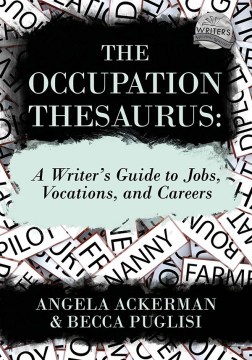
As you can see, you can get a lot of show-don���t-tell mileage from your character���s job choice!
So, don���t make the mistake I did long ago. Take your time when choosing their career. (This list will get you started.)
If you would like to explore more ways to utilize a character���s career, check out��The Occupation Thesaurus: A Writer���s Guide to Jobs, Vocations, and Careers.
The post Your Character’s Job May Be More Important than You Think! appeared first on WRITERS HELPING WRITERS��.
Writers Helping Writers
- Angela Ackerman's profile
- 1014 followers



